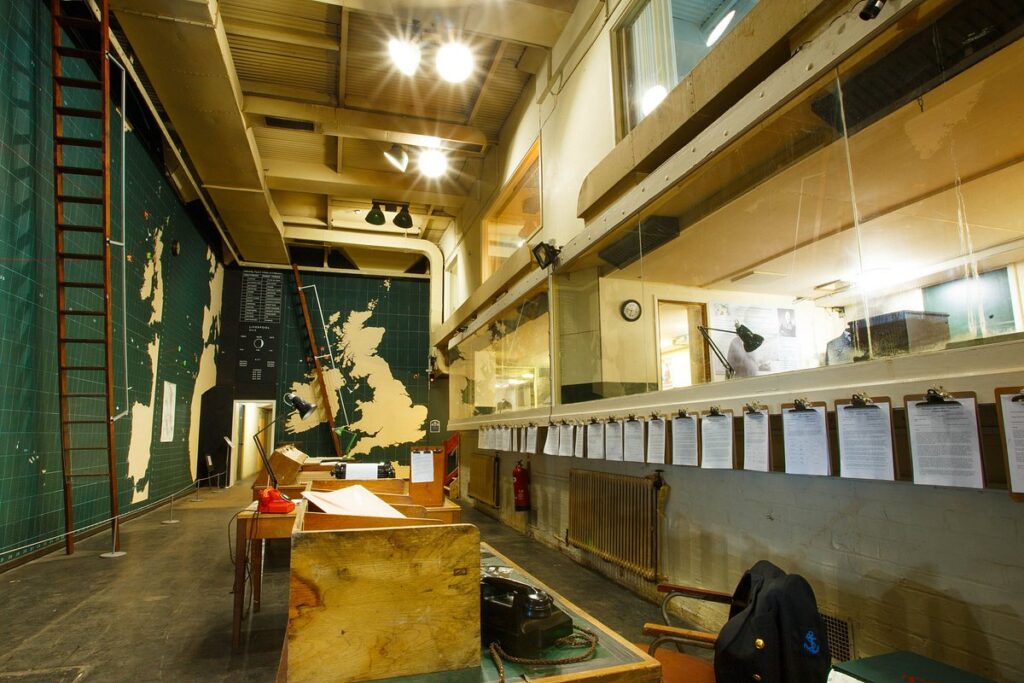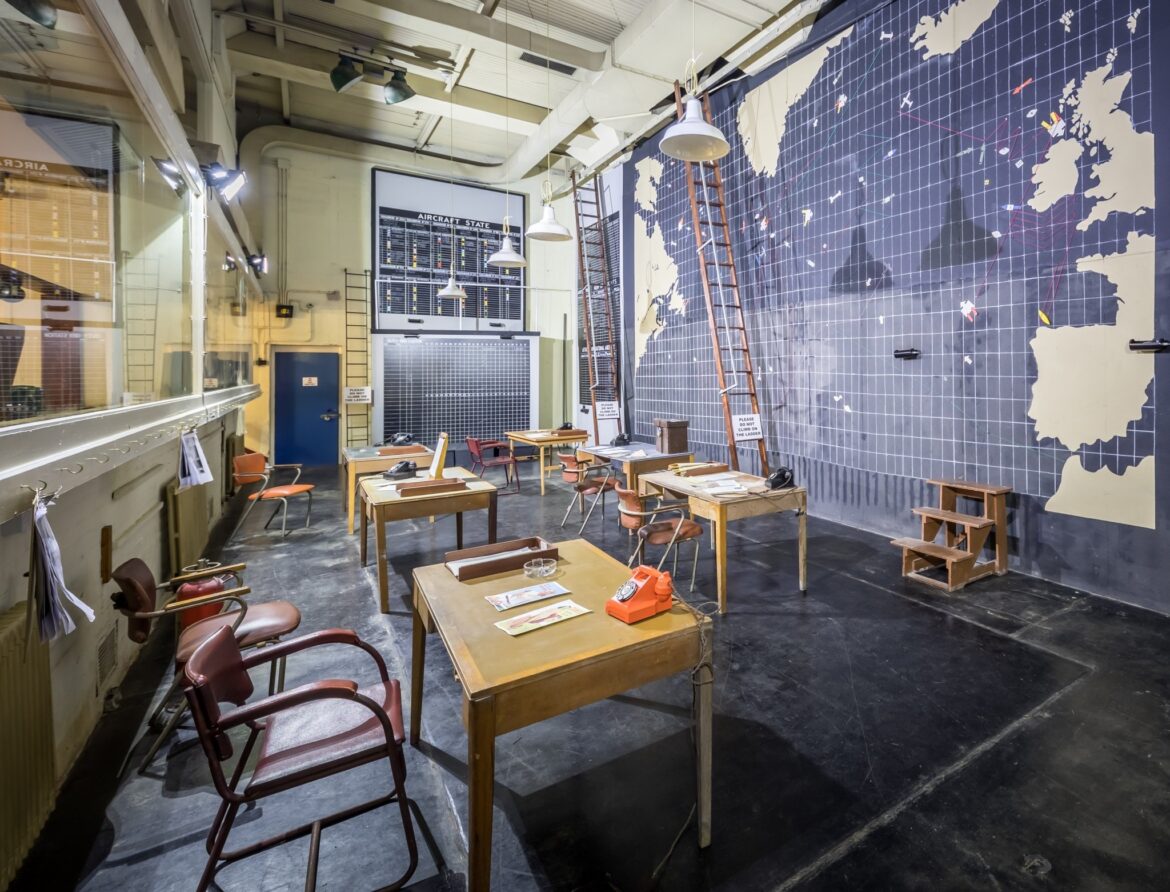Introduction
Liverpool’s strategic position as a major port city made it a key target during World War II and an essential hub for the Allied war effort. The Western Approaches Headquarters (HQ) Museum, located in Liverpool’s historic waterfront area, preserves the legacy of the city’s role in the Battle of the Atlantic. The museum is housed in the former underground military command center used by the Royal Navy and the Western Approaches Command to coordinate naval operations and protect vital convoys against German U-boats.

Opened as a museum in 1993, the Western Approaches HQ Museum provides a unique, immersive experience that allows visitors to explore the strategies, operations, and lives of the men and women who played a crucial role in the Atlantic campaign. This essay explores the history, architecture, exhibits, interactive experiences, and cultural significance of the Western Approaches HQ Museum.
Historical Background
The Western Approaches were the Atlantic waters off the northwest coast of the United Kingdom, through which vital Allied shipping convoys passed during World War II. These waters were frequently targeted by German submarines (U-boats) in an attempt to cut off supplies and weaken Britain’s war effort.
To coordinate the protection of shipping convoys and manage naval operations, the Royal Navy established a central command center in Liverpool in 1939. The choice of Liverpool was strategic: it was the principal port for Atlantic convoys, and its location provided access to communication and transport networks. The command center became operational in October 1941, after construction of the reinforced underground bunker was completed.
The bunker was a fortified, bomb-proof facility designed to withstand aerial attacks. It housed operational rooms, plotting rooms, communications equipment, and offices, where naval officers, strategists, and signals personnel coordinated the movements of merchant and naval vessels. Over the course of the war, the Western Approaches HQ played a pivotal role in ensuring the safe passage of supplies, contributing directly to the Allied victory in the Battle of the Atlantic.
Architecture and Bunker Design
The Western Approaches HQ is located beneath Exchange Flags in Liverpool’s city center, within a reinforced concrete and steel structure. The design reflects wartime engineering priorities, emphasizing security, resilience, and operational efficiency.
Key Features
- Bomb-Proof Construction:
The bunker is constructed with thick reinforced concrete walls and ceilings, designed to withstand bombing raids. The underground location and fortified design ensured the continuous operation of command and control functions during air attacks. - Operational Rooms:
Central to the facility were the operational and plotting rooms, where naval staff monitored shipping convoys, tracked enemy activity, and coordinated responses. Large plotting tables, maps, and markers allowed officers to visualize movements across the Atlantic. - Communication Facilities:
The bunker contained a communications center with telephones, wireless equipment, and signal rooms. These facilities enabled coordination with ships at sea, ports, and other command centers, ensuring real-time information exchange. - Accommodation and Offices:
The facility included offices, sleeping quarters, and mess areas for staff, allowing continuous operation 24 hours a day. This self-contained design reflects the intensity and urgency of wartime command activities. - Air-Raid Shelters:
Safety was a priority, and the bunker included air-raid shelters and reinforced corridors, allowing staff to remain operational even during bombing raids on Liverpool.
Exhibitions and Collections
The Western Approaches HQ Museum offers a comprehensive look at Liverpool’s wartime history, with a particular focus on naval strategy and the Battle of the Atlantic. Exhibitions combine historical artifacts, interactive displays, multimedia presentations, and immersive reconstructions to engage visitors.
Key Exhibitions
- Command and Control Room Recreation:
Visitors can see a detailed reconstruction of the operations room as it would have appeared during World War II. Large maps and plotting tables illustrate convoy movements, while period communications equipment demonstrates how information was relayed and decisions were made. - Battle of the Atlantic:
This exhibition explores the strategic importance of the Atlantic convoys, the threat posed by German U-boats, and the tactics used by the Allies to protect shipping. Artifacts include naval charts, ship models, uniforms, medals, and photographs documenting the men and women involved in these operations. - Life in the Bunker:
Displays explore the daily life of staff working in the bunker, highlighting both the challenges and routines of officers, signalers, and support personnel. Personal accounts, diaries, and oral histories provide insight into the human dimension of wartime command. - Signals and Communications:
The museum exhibits period radio equipment, Morse code devices, and telecommunication tools used to coordinate naval operations. Interactive displays allow visitors to understand how signals were sent, received, and interpreted under pressure. - Liverpool During the Blitz:
This section contextualizes the city’s wartime experience, including air raids, civilian defense measures, and the impact on the local population. Artifacts include photographs, letters, and personal belongings of those who lived through the bombings. - Memorials and Honors:
The museum pays tribute to the men and women who served in the Western Approaches HQ and the wider naval operations. Medals, plaques, and commemorative displays honor their contributions to the war effort.
Interactive and Immersive Experiences
A key feature of the Western Approaches HQ Museum is its immersive approach, allowing visitors to experience history in a tangible and engaging way.
- Interactive Plotting Tables:
Visitors can see how convoy movements were plotted and tracked using period techniques. These interactive displays demonstrate the complexity and precision required for successful naval coordination. - Audio-Visual Presentations:
Multimedia presentations, including archival footage, recordings of naval commands, and interviews with veterans, provide a rich auditory and visual experience. - Guided Tours and Roleplay:
Guided tours, led by knowledgeable staff or volunteers, often include roleplay elements, allowing visitors to experience decision-making processes in the operations room. - Virtual Reconstructions:
Some exhibits utilize digital reconstructions and simulations to demonstrate the scale and logistics of Atlantic convoys, providing context for the strategic challenges faced by naval staff.
Educational Role
The Western Approaches HQ Museum plays a significant educational role, catering to schools, researchers, and the general public.
School Programs
Educational programs focus on World War II history, naval strategy, and Liverpool’s civic and maritime heritage. Workshops and guided tours provide students with interactive and engaging learning experiences, emphasizing both historical facts and critical thinking about wartime decision-making.
Research and Scholarship
The museum maintains extensive archives, including naval records, personal diaries, maps, photographs, and official documents. Scholars and historians use these resources to study military history, strategy, and Liverpool’s role in the war effort.
Community Engagement
The museum hosts events, lectures, and commemorations, ensuring that the local community remains connected to Liverpool’s wartime history. Special programs during anniversaries of key battles or events provide opportunities for reflection and education.
Cultural and Social Significance
The Western Approaches HQ Museum is not just a historical site; it is a cultural institution that preserves Liverpool’s wartime heritage and reinforces civic identity.
Tourism and Economy
As a unique historical attraction, the museum draws thousands of visitors annually. Its focus on immersive experiences, combined with the Albert Dock’s wider attractions, contributes significantly to Liverpool’s cultural tourism and local economy.
Heritage Preservation
By preserving the bunker, artifacts, and personal stories, the museum safeguards an essential part of Liverpool’s wartime heritage. The site offers insight into military strategy, technological innovation, and the human experience of war.
Civic Identity and Remembrance
The museum reinforces Liverpool’s identity as a city that played a vital role in the Allied war effort. By honoring the contributions of naval personnel and civilians, it serves as a place of remembrance and civic pride.
Notable Artifacts and Collections
Some of the museum’s most remarkable items include:
- Original naval charts and plotting tables from the bunker operations.
- Communication equipment, including telephones, Morse code machines, and wireless devices.
- Uniforms, medals, and personal effects of officers and support staff.
- Photographs and film footage documenting convoy operations and life in Liverpool during the Blitz.
- Models of ships and submarines involved in the Battle of the Atlantic.
These artifacts provide a tangible connection to the past, helping visitors understand both the scale and human dimension of the war effort.
Conclusion
The Western Approaches HQ Museum is a unique and invaluable institution that preserves Liverpool’s wartime legacy. By exploring the strategic operations of the Royal Navy, the challenges of the Battle of the Atlantic, and the daily lives of those who served in the bunker, the museum provides a comprehensive understanding of Liverpool’s role in World War II.
Through its immersive exhibits, interactive experiences, and extensive collections, the museum educates, engages, and inspires visitors. It highlights the importance of maritime strategy, civic resilience, and human courage in the face of adversity.
As both a historical site and cultural attraction, the Western Approaches HQ Museum reinforces Liverpool’s identity as a city of strategic importance, innovation, and endurance. It stands as a testament to the men and women who served during a critical period of world history and ensures that their stories, sacrifices, and achievements are remembered and appreciated by generations to come.
Liverpool’s Western Approaches HQ Museum is not only a monument to history but a living reminder of the city’s enduring contribution to global maritime defense, making it an essential destination for anyone seeking to understand the intersection of military strategy, civic duty, and human resilience.

